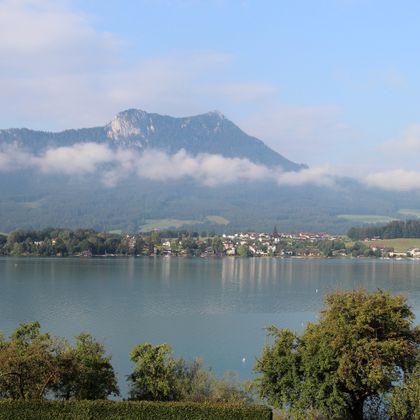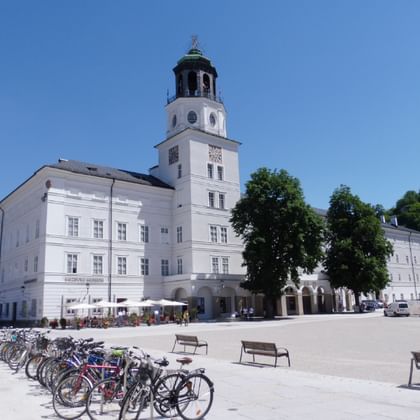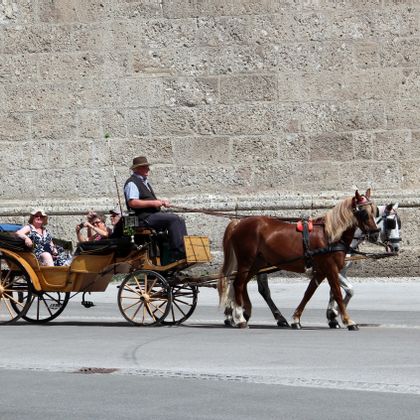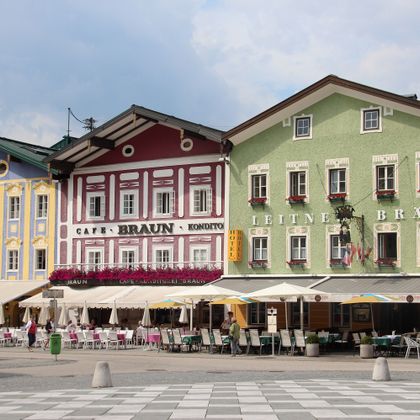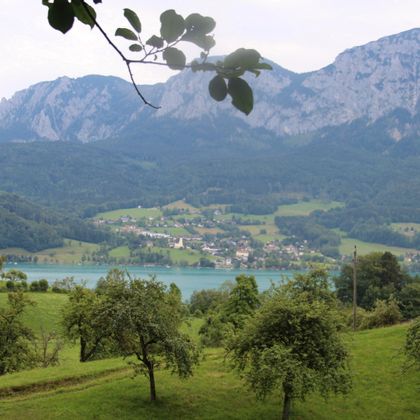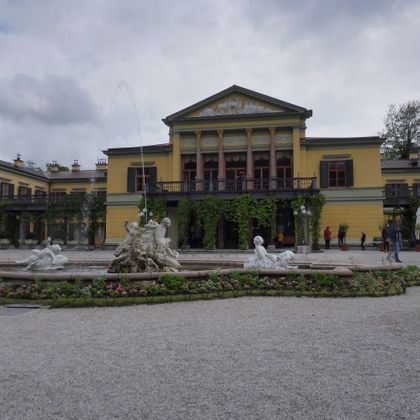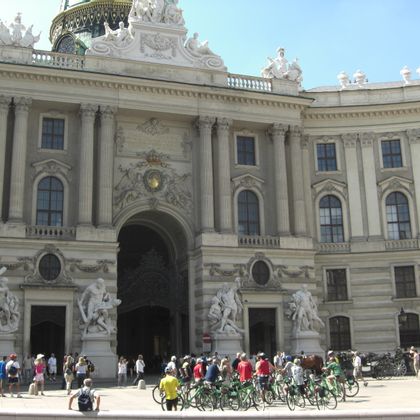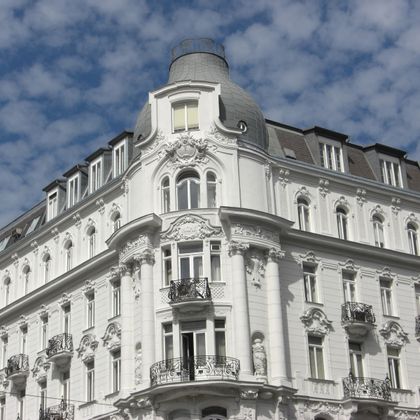tour
Arrive early, because it's worth it. The festival city of Salzburg welcomes you with lots of charm and top-class sights, such as Salzburg's old town, Hohensalzburg Fortress and Mirabel Palace.
You leave the Mozart city of Salzburg on a gentle up and down towards Wallersee. A break in Mondsee is worthwhile, as the town offers you a pretty town center and a beautiful lakeside promenade. You then cycle along the banks of the picturesque Mondsee to Austria's largest inland waterway, the Attersee.
Today holds a short ascent into the Weißenbachtal valley in store for you. However, a rapid descent to the banks of the Traun and on to the European Capital of Culture, Bad Ischl, makes up for this. There you visit the Salt Lake City exhibition, which is dedicated to salt and water. You then follow the Traun at a leisurely pace to Ebensee on Lake Traunsee. Continue by boat to your destination for the day, the ceramics town of Gmunden. Visit the manufactory of the famous hand-painted ceramics.
Today you follow the cycle path along the Traun to Lambach on flat paths. In the afternoon, take the train to Linz (incl.). The famous Linzer Torte is a tempting treat in the city's coffee houses, but the city itself is also well worth a visit. With the Linz Card, you can easily go on a discovery tour, as numerous attractions are freely accessible to you.
Through meadows and through forests you cycle to St. Florian today, visit the famous monastery and follow the beautiful cycle path to Enns, the oldest city in Austria with its 60 m high city tower. After Enns, continue along the Danube until you reach the wonderful baroque town of Grein.
A beautiful section of the Danube awaits you today. Enjoy your ride along the historical Nibelungengau and take your time for the pilgrimage Maria Taferl. From the Marienheiligtum, which is picturesquely situated on a hill 233 m above the Danube, there is a magnificent view over the Danube valley and the hilly landscape of the Mostviertel up to the Alpine chain, which spreads over a width of more than 300 km in front of the visitor.
The ride through the Wachau offers a true cultural fireworks. Be it a visit to the wine cellars or the unique cultural landscape of this UNESCO World Heritage region. From Tulln you go by train to the center of Vienna (incl.). Take time for the capital of Austria, marvel at St. Stephen's Cathedral and treat yourself to a slice of cake in one of the typical coffee houses.
Today your bike tour from Salzburg to Vienna ends after breakfast. The return journey by train to Salzburg is included (without bike). On request, we book extra nights, so you can explore the city.
map
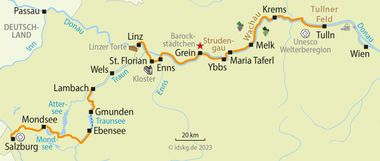
Prices / Dates
Services / Info
- 7 nights with breakfast in hotels on a 3- and 4-star level
- Rooms with shower/bath/WC
- Luggage transport
- Boat trip on Lake Traunsee incl. bike
- Train ride Lambach - Linz incl. bike
- Train rideTulln - Vienna incl. bike
- Return train ride Vienna - Salzburg (transfer of own bikes not included)
- Your personal bike route in an individualized bike book, as a digital application for computer and cell phone, GPX data for your navigation device
- 1 high-quality handlebar bag per room
- 7-day hotline service
Below you will find specific information to the bike tour from Salzburg to Vienna. If you have any further questions please feel free to contact us by phone: 0049 - (0)6421-886890.
Arrival by train
Salzburg is easily accessible from all major cities in Germany by train. We recommend to take a taxi from the station to get to our partner hotels in Salzburg. Current schedule information and price information can be found at: www.bahn.de.
Parking facilities at the hotel
In the parking garage Linzer Gasse (entrance Glockengasse, about 4 minutes walk to the center), parking facilities are available. Costs: approx. € 90.00 per week, each additional day € 30.00 (24 hours). You will receive detailed information about the parking facilities at the hotel booked for you with the detailed travel documents two weeks before the start of the journey.
Condition of cycle paths
From Salzburg to Passau, without many interruptions you cycle usually on well passable, but not paved bike paths along the river there. The bike route along the Danube is very well developed, virtually everywhere there are paved bike paths or roads with little traffic, mostly even on both sides of the Danube. Only short stretches are not paved.
Available rental bikes
You can choose between woman’s and men's bicycles with 21-speed gear shift and freewheel and e-bikes. Included are two saddle bags for each bike. You simply specify your wishes at time of booking.
Transfer back from Vienna to Salzburg
The return journey from Vienna to Passau by train is included in the travel price. Costs for taking your own bikes are not included.
Extra costs which are not included in the tour price
Any tourist tax and charging fees for bicycle batteries are not included in the tour price and must therefore be paid at the hotel. The cost of transporting your own bikes on the train journey back to Salzburg is also not included.
7 day hotline service
Just in case the bike chain breaks, flooding makes it impossible to continue your tour or any other nasty surprise: You can reach us seven days a week and we will do anything to help you as fast as possible.
Passport and visa requirements
For EU citizens, there are no special passport or visa requirements and no health formalities to be considered for this trip.
Travel insurance
The tour price already includes the statutory insolvency insurance. In addition, we recommend that you take out travel cancellation insurance upon receipt of your travel confirmation in order to protect yourself against financial disadvantages in the event of travel cancellation, interruption of travel, illness or accident.
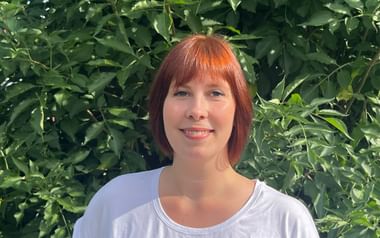
I provide you with advice and assistance
Nicole Henke
